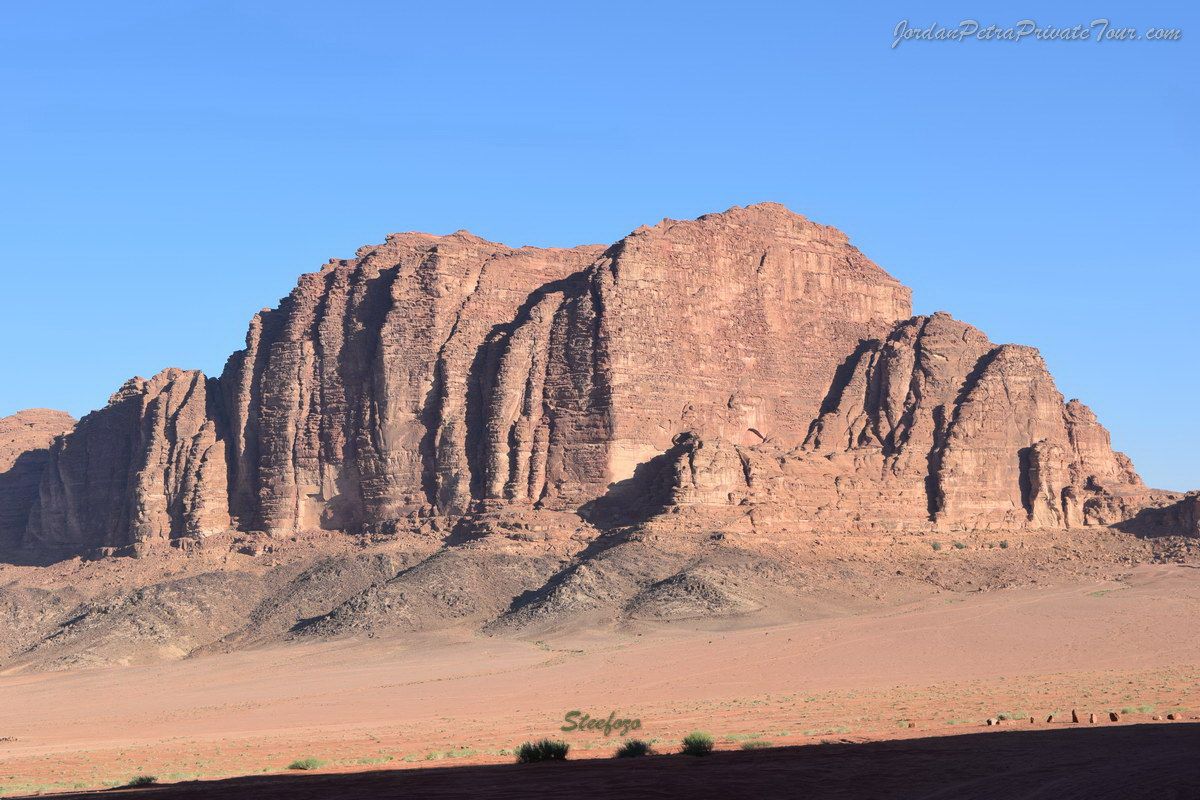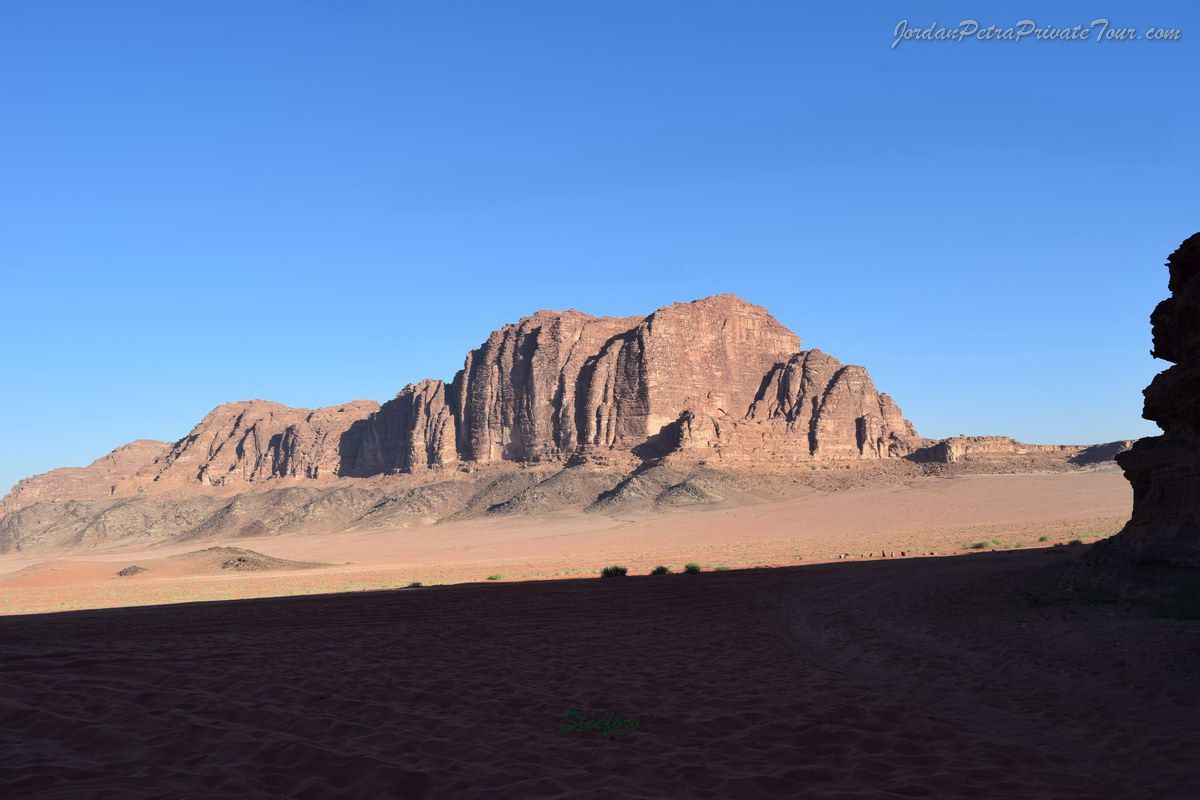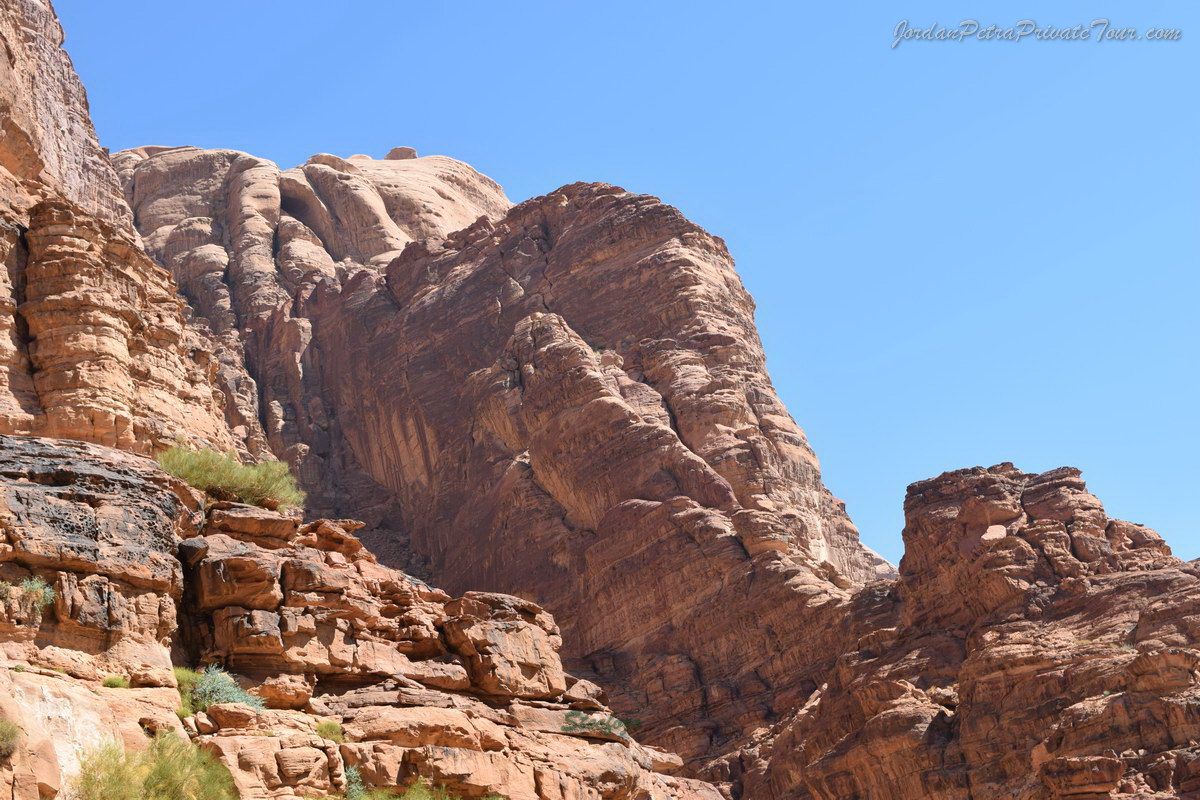Wadi Rum, or Rum Valley is a glorious and unique place located at the southern desert - part of Jordan, and you would reach it after 3-4 hours of driving from Amman via the desert highway, and I usually use to recommend visiting of Wadi Rum as a part of Petra visit for two main reasons:
if you have a very limited time to spend in Jordan - like two days only - then it would be possible to do Petra day tour, and move afterwards toward Wadi Rum, where you could spend the night at one of the Bedouin camps, either at Rum Reserve itself or at Al-Desy area (which is out of the reserve), I’ll talk about the differences on both areas at Wadi Rum, which might be so confusing for some travelers , while other won’t see any difference (there is a big difference actually and you need to know before you make your decision on booking a night stay at Wadi Rum, also you need to know what would be the difference in making your trip on your own or using a professional tour guide ).
How did the People find the water resources in the past and survive at Wadi Rum ?
According to the geologists and scientists, the rain level in Jordan and the whole region started to drop down during the past fifteen thousand year and the area has moved from being covered of a green forests and variety of wildlife that exist one day to become more and more deserted
- The Dead Sea started to shrink since then, and it use to be at least 100 KM wider - even it was connected to Galilee lake which is isolated now at the Northern area
- The Ottomans (Turkish ) were responsible for chopping more than fifteen million trees in Jordan in order to support the railway (train passage), that was created before the First World War.
- Some of wildlife still exist or it was disappeared just in the past few years like the Arabian Tiger, Mountain Goats, the Ibex - The Lion was described on different writings and even was carved particularly at Petra itself - The Lion Triclinium “on the way to the Monastery - Aldir “ and the Lion Fountain “Wadi Farasa - Petra back road to High Area of Sacrifice”
![wadi rum jordan 55 20170420 1977100535]()
- A huge and deep groundwater area was found at the southern part of Jordan - Northern of Saudi Arabia , particularly at Wadi Rum area, The Saudis has been using it for years now ( around 30 years ) extensively, and Jordan just recently managed to establish a water pipeline that brings the water from Rum desert into Amman city, they are pumping more than one hundred million quebec meter every year , and it is sufficient for the next 50 years according to the geologists .
- It was not possible for the bedouins who lived at Wadi Rum to reach or use this underground water resource in the past because it is very deep, and we were able to do it just during the past few years.
- The rain level average at Wadi Rum area during the past two centuries is less than 50mm per year.
This picture at Wadi Rum for Lawrence Spring , Shoes one of the mountains, Igneous layer is seen at the base of the sedimentary layer (the upper layer), and the green trees can be seen clearly between the two layers. (Photo by: Mustafa Nofal)
Saying this, a big question always arise; how the people were able to survive and live at Wadi Rum and the surrounding areas of Jordan for thousands of years ? How the bedouins were able to find the water on the Southern desert of Jordan? This is actually a very important question and it is very important to answer it as well with some explanation specially while escorting travelers all over the Wadi - valley - while doing the Jeep tour or camel ride
Before going into the answer, I need to explain that the mountains at Wadi Rum, and this is what the name means , Rum: The high or elevated, these mountains were formed more than two billion years ago by the volcanic activity ( the base layer of the mountains ) , later on , the whole area was covered with water, the soil and sand started to sediment over the volcanic layer and created very high mountains, so the base layer of these mountains is Igneous, and the upper layer is Sedimentary , and you would be able to see and distinguish those two layers with your eyes while roving at Wadi Rum, either during the Jeep tour, hiking or through the camel ride, the lower -Igneous layer- looks with dark color and in some areas it is 50-70 meters high , while the Sedimentary layer goes all the distant up ( up to around 900 meters from Rum village level), and I use to explain all these details while escorting my groups in Rum valley , walking all the track up to reach one of the most intersting springs to see , passing over the igneous layer, and walking through the waves of granite (a very hard, granular, crystalline, igneous rock consisting mainly of quartz, mica, and feldspar and often used as a building stone..) , and it is very interesting actually to see this layer very close while walking and even touching the granite itself.
How Does it Happen at Wadi Rum:
What is happening actually is that when it rains at Wadi Rum during winter time, the upper layer of the mountains ( the Sedimentary rocks) will absorb the water, and the absorbed water will start going down and down, day after day, till it reaches the Igneous layer , which is very hard - solid layer consist mainly of Granite and different kind of Igneous rocks, and this layer will not absorb the water that comes through the mountain from the upper layers and it will not allow the water to go even further, and the water will start to flood going out from the separation layer because it can not go through, and wherever water exist , life will start, and life would exist as well , and you would be able to see while hiking, camel riding or during the Jeep Tour at Wadi Rum a row of trees or something greenery from a distant growing at the separation layer ( the layer between the Sedimentary and the Igneous rocks), and this the indication of water existance at Wadi Rum that the local - the bedouin knows and knew how to find the water at the valley, and this is the main source that was used in the past at Rum valley , in addition to building small dams by the people between some canyons that was used to keep the water for summer time mainly for the animals ( like Al Romeya dam - Kindly see photos )
Activities at Wadi Rum: Stargazing, Campfire, Jeep Tour, Camel Ride and triking .
In addition to enjoying the amazing and glorious landscape at Wadi Rum, spending the night at one of the camps (Bedouin camps) or even private camping, stargazing and watching shooting stars (meteors), campfire , and doing a Jeep Safari tour for at least two hours, which is essential to explore some of the unique places at Wadi Rum, like Lawrence Spring, which represents the same water system that we talked about, Khazali canyon, Um Fruth and Um Burdah stone bridges and the Sand dunes.
Although it would be possible to arrange all transportation to Wadi Rum from Amman either by renting a car , or even taking public transportation, but the trip experience would be completely different if it was a guided tour with a professional tour guide, just knowing that the Jeep drivers at Wadi Rum will drive you from one place to another , but will not give you any information except the name of the places that they are covering, and they won’t even walk with you on those places, and climbing over Umm Fruth bridge without a guide can be dangerous as well.
Wadi Rum Reserve Vs Non Reserve areas
Wadi Rum is a huge area, and with a quick look at Google maps you could draw a box area of 50 Kilometer in width and high , so it is around 2500 Km² , there is however, a specific area that is considered a reserve, and this reserve is controlled by the RSCN ( Royal Society for Cultural Reserves), and this area starts from Wadi Rum visitors center till you reach the Saudi borders (around 40 Km - 30 Km of road in the desert itself), the reserve itself is almost divided into two parts, one part that is being used by the locals to build their camps ( tourist camps), while the other part is closed and contains all the wildlife that they are trying to take care off ( like the mountain goats and foxes ),, So what is wrong then, as long as the area is huge; the issue is actually is that all the camps at the reserve area are following a specific rules regarding the design of the camps, and they are not provided with power source or water system , so they less crowded, more calm and quiet comparing to the non - reserve areas at Wadi Rum. The camps on the non reserve parts are provided with all services starting from the electricity to water , and you won’t feel any difference other than staying on a city , while on the reserve itself you would got the feeling on some parts as if you were taken into a trip out of this world, as if you are visiting another planet.
Written by: Mustafa Nofal
Member of Jordan Tour Guides Association


